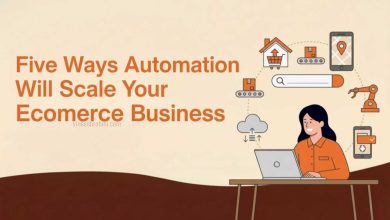How to Start a Remote Service-Based Business : Comprehensive Guide 2025
Remote Service-Based Business : In the modern digital economy, remote work and online entrepreneurship are no longer trends — they’re the foundation of a new business era. As 2025 unfolds, the concept of a remote service-based business is reshaping how professionals deliver value, connect with clients, and build scalable income streams from anywhere in the world.
Table of Contents
Whether you’re a freelancer looking to formalize your services, a corporate professional seeking independence, or an entrepreneur planning to tap into global markets, this comprehensive guide will walk you through how to start, structure, and scale a profitable remote service business in 2025.
Understanding Remote Service-Based Businesses
A remote service-based business provides professional, creative, or technical services to clients without physical proximity. Instead of selling physical products, these businesses sell expertise, time, or results — all delivered digitally. Examples include digital marketing, web development, graphic design, virtual assistance, consulting, coaching, SEO services, accounting, content writing, and IT support.
Also Read : 3 Easy Online Businesses You Can Start Today – Comprehensive Guide 2025
What makes 2025 especially exciting is the rise of automation, artificial intelligence, and global digital infrastructure. Businesses can now hire, collaborate, and deliver results remotely with higher efficiency than ever before. According to recent reports, over 65% of service-based entrepreneurs now operate fully online, leveraging cloud platforms, automation tools, and AI-driven workflows.
Why Start a Remote Service-Based Business in 2025?

Starting a remote business offers flexibility, independence, and global opportunity — but in 2025, it’s also a competitive advantage. Here’s why it’s the perfect time to start:
- Low Startup Cost: Unlike traditional businesses, you don’t need an office, physical inventory, or heavy investment. All you need is a laptop, stable internet, and skills.
- Global Client Access: Platforms like Upwork, Fiverr, and LinkedIn allow you to work with clients worldwide, expanding your reach beyond local boundaries.
- Automation & AI Integration: Tools like ChatGPT, Zapier, HubSpot, and Notion streamline operations, client management, and service delivery.
- High Demand: Businesses increasingly outsource specialized services to remote professionals to cut costs and boost productivity.
- Scalability: You can start solo and expand by hiring freelancers or building an agency model.
- Work-Life Balance: Remote businesses allow location freedom and time flexibility — ideal for modern entrepreneurs seeking autonomy.
Step 1: Identify Your Niche and Target Market
Every successful remote service-based business starts with a clear niche — the specific area of expertise where you deliver the most value. Instead of trying to serve everyone, focus on a specific problem or audience.
How to Choose a Niche:
- Assess Your Skills: List your technical, creative, or analytical abilities.
- Evaluate Market Demand: Use platforms like G Trends, Upwork, and LinkedIn to check which services are trending.
- Find a Profitable Pain Point: Businesses pay for results — find a problem you can solve effectively.
- Narrow Your Focus: Instead of “digital marketing,” specialize in “social media strategy for eCommerce brands.”
Example Niches for 2025:
- AI marketing automation services
- Virtual bookkeeping for startups
- Online business consulting
- Social media management for local businesses
- Website design for coaches and influencers
- SEO content writing for SaaS brands
Step 2: Define Your Services and Pricing Strategy
Once you know your niche, clearly define what you offer and how much you charge. Your services should provide measurable value and be easy for clients to understand.
Example Service Packages:
- Basic: A one-time service (e.g., website audit or logo design)
- Standard: A project-based package (e.g., website redesign or marketing campaign)
- Premium: Ongoing support or consulting (e.g., monthly SEO or virtual assistance)
Pricing Strategies:
- Hourly Rate: Charge per hour (ideal for new freelancers).
- Project-Based Pricing: Set fixed prices per project.
- Retainer Model: Offer monthly services for consistent revenue.
- Value-Based Pricing: Charge based on the results or business impact you provide.
To stay competitive in 2025, combine transparent pricing with automation tools that streamline proposals, contracts, and invoices.
Step 3: Build a Professional Online Presence
In a remote business, your digital presence is your storefront. Your website, social media profiles, and online reputation shape client trust.
Must-Have Elements of Your Online Presence:
- Professional Website: Build a clean, mobile-friendly website that highlights your services, testimonials, and portfolio. Use platforms like WordPress, Wix, or Webflow.
- Portfolio or Case Studies: Showcase real examples of your work with measurable results.
- Clear Branding: Choose consistent colors, fonts, and visuals to create brand identity.
- SEO Optimization: Use relevant keywords in your website titles, meta descriptions, and blogs to attract organic traffic.
- LinkedIn Profile: Optimize your LinkedIn with a professional headline, service description, and client testimonials.
- Social Proof: Collect and display reviews, ratings, or testimonials on your website and platforms.
Step 4: Set Up Essential Business Tools and Systems
Running a remote service-based business requires efficiency. The right tech stack helps you manage clients, deliver projects, and scale operations.
Recommended Tools for Remote Entrepreneurs in 2025:
- Communication & Collaboration: Slack, Zoom, Microsoft Teams
- Project Management: ClickUp, Notion, Trello, Asana
- Automation: Zapier, Make, Airtable Automations
- CRM & Client Management: HubSpot, Dubsado, HoneyBook
- Payments & Invoicing: Payoneer, Wise, Stripe, Razorpay
- AI Productivity Tools: ChatGPT, Jasper, Grammarly, Otter.ai
Automating repetitive tasks helps you focus on growth, creativity, and client satisfaction.
Step 5: Legal and Financial Setup
Even though your business operates online, legal structure and financial systems are crucial.
Legal Requirements:
- Choose a Business Structure: Register as a sole proprietor, LLP, or private limited company (depending on your country).
- Register Your Business Name: Secure your brand identity and domain.
- Obtain Tax Registration: Get your GST or relevant tax ID.
- Create Contracts: Use standard client agreements to define deliverables, timelines, and payment terms.
Financial Management:
- Open a Business Bank Account: Keep personal and business finances separate.
- Use Accounting Software: Tools like QuickBooks or Zoho Books simplify bookkeeping.
- Track Income and Expenses: Use digital invoicing for transparency.
Step 6: Marketing Your Remote Service-Based Business

Once your foundation is ready, the next step is client acquisition. Your goal is to consistently attract, engage, and convert clients using smart marketing strategies.
Best Marketing Channels for 2025:
- Content Marketing: Start a blog or YouTube channel around your niche to demonstrate expertise.
- SEO: Optimize your website with high-traffic keywords to attract organic leads.
- Social Media Marketing: Use Insta, LinkedIn, and X (Twitter) to showcase projects and share insights.
- Email Marketing: Nurture relationships through newsletters and automation.
- Paid Advertising: Use G Ads, Meta Ads, or LinkedIn Ads for lead generation.
- Networking: Join online communities, business groups, and Slack networks related to your industry.
- Freelance Platforms: Build client pipelines through Upwork, Fiverr, and Toptal.
Step 7: Deliver Exceptional Client Experience
Your reputation determines your growth. A satisfied client not only brings repeat business but also valuable referrals.
How to Deliver Excellent Service:
- Communicate proactively with updates and reports.
- Meet or exceed deadlines.
- Collect feedback and make improvements.
- Offer small extras (like a free consultation or bonus tip).
- Build long-term relationships with loyalty programs or discounts.
Use CRM systems to track conversations, automate follow-ups, and personalize interactions.
Step 8: Scale Your Remote Business
Once you have stable clients and systems, focus on scaling operations and expanding your service reach.
Scaling Strategies:
- Hire Remote Team Members: Outsource repetitive tasks or hire specialists.
- Create Standard Operating Procedures (SOPs): Document workflows for consistency.
- Automate Tasks: Automate email follow-ups, billing, and client onboarding.
- Expand Services: Introduce complementary offerings (e.g., add SEO services to web design).
- Build an Agency Model: Rebrand your solo service as a digital agency.
- Offer Online Courses or Templates: Turn expertise into passive income.
Scaling isn’t about working more hours — it’s about optimizing processes and leveraging talent globally.
Step 9: Stay Updated and Adapt to Trends
The digital world evolves rapidly. Entrepreneurs who stay adaptable and informed thrive the most.
Trends to Watch in 2025:
- AI-Driven Service Delivery: Use automation and AI tools to enhance client experiences.
- Data Privacy and Cybersecurity: Prioritize secure client communication.
- Hybrid Service Models: Combine human creativity with AI efficiency.
- Sustainability and Ethical Branding: Build trust by being transparent and eco-conscious.
- Global Remote Hiring: Access talent pools from different countries to grow efficiently.
Common Challenges and How to Overcome Them
Starting a remote business isn’t without challenges. Here’s how to manage common hurdles:
- Client Inconsistency: Build recurring revenue streams with retainer clients.
- Work-Life Balance: Set boundaries and use scheduling tools.
- Competition: Differentiate with personal branding and niche specialization.
- Cash Flow Issues: Track expenses and create emergency funds.
- Isolation: Join entrepreneur communities and co-working spaces online.
Remote Service-Based Business -Conclusion

Starting a remote service-based business in 2025 is more than a professional move — it’s a lifestyle transformation. With minimal investment, global reach, and flexibility, it empowers individuals to turn skills into sustainable income. By choosing the right niche, creating a strong digital presence, delivering value, and leveraging automation, anyone can build a profitable and scalable online business from home.
Buy Now : Affiliate Success Mantra – Win Affiliate Markets
Remember, success doesn’t come from doing everything at once. It comes from consistent action, continuous learning, and adapting to change. The remote business world is vast, competitive, and full of opportunity — and 2025 is the perfect time to claim your place in it.
Disclaimer : This article is intended for informational purposes only. Business results may vary depending on experience, effort, and market conditions. Always consult with legal, financial, or business advisors before making investment or structural decisions for your remote service business.



